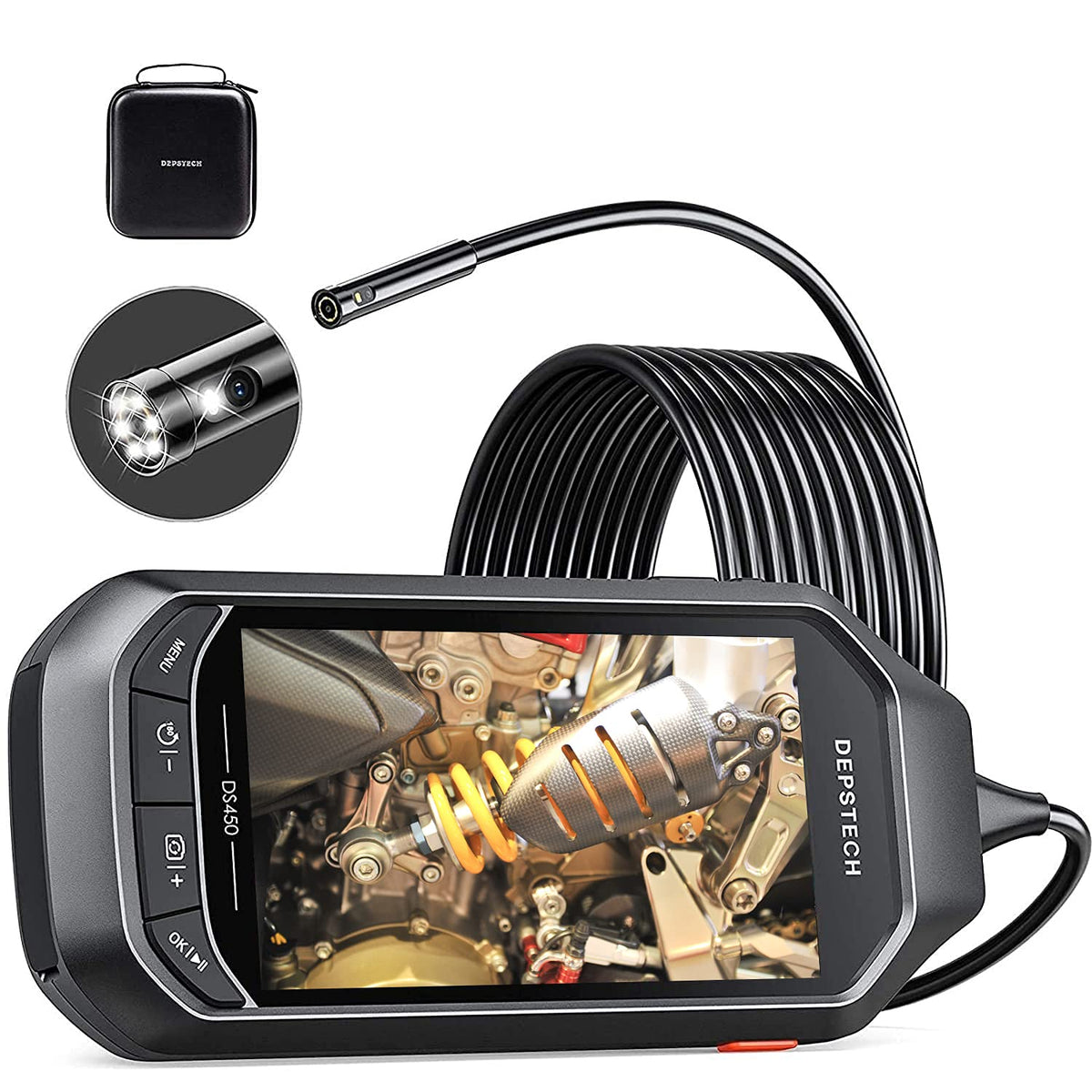You are using an out of date browser. It may not display this or other websites correctly.
You should upgrade or use an alternative browser.
You should upgrade or use an alternative browser.
Intake valve cleaner recommendation
- Thread starter ColtX-5
- Start date
True, but it would be nice if there was some kind of way to check.
Do different driving conditions affect the amount of intake valve deposits? Different fuels or oils?
Turbocharged engines might have worse deposits.
Mazda did things to the cooling of the engine to make the intake valves run hotter to reduce the build-up. If you could figure out a way to drive that heated the valves, you might reduce the build-up.
Fuel should not make much difference as the fuel is injected after the intake valve closes.
Oil might well make a difference because the build up has to come from leakage past the valve stem seals and backlog into the intake manifold during Atkinson-cycle emulation. An oil that has a higher temp tolerance might not crap up the valves as fast (oil coking).
Whoa they created a one-person intake valve cleaner kit. Gonna have to try this some time.My 2016 has 71000 miles on it. When it had @ 20k, it regularly cleared 30 mpg on highway trips, with the best being 32.4. But, I haven't seen 30 mpg in 2 years. Those same trips half-way across the state had dropped to 27 - 27.5.
In preparation for a trip to FLA, I decided to try an intake valve cleaner. I chose an STP product I found at the parts store. Though I'd tried another cleaner at 30k miles, it didn't seem to do much. This time I got good results. The engine seemed to run a little smoother, but more importantly, my fuel mileage improved 2 mpg, or a little more at 65 mph. So, I bought another can and repeated the treatment. After the second treatment I was getting 31.5 mpg on semi-rural highways near home. Cool!
On the trip from TN to the Panhandle I was averaging 33.6 mpg running the speed limit or just under, until I got to the small towns on 2-lane roads near the AL line and finished the trip at 31.2 mpg. I used cruise control as much as possible.
This is the stuff.
View attachment 298487
It is easy for one person to use. And actually seems to work. Part of the instructions is to drive the car 15 minutes after finishing the treatment. Each time the engine would stumble and miss at some point in the 15 minutes and go into limp mode. Restarting the engine fixed that. Best of all it has restored my fuel mileage to what it was early in its life. I plan to retreat the engine at 30k mile intervals.
If I could find a trusted shop I would likely just have a walnut blast done every 60k miles. I've personally not seen any of the spray cleaner products do a thorough job. It seems you need to get in there and pick and scrub as well.

 speedlogicauto.com
speedlogicauto.com

Walnut Shell Blasting
What is Walnut Shell Blasting? Walnut Shell Blasting involves "shooting" a mixture of compressed air and Walnut Shells into the Intake Ports to clean carbon deposits and buildup that occurs slowly over time on the Intake Valves. It is considered a scheduled maintenance service that is required...
 speedlogicauto.com
speedlogicauto.com
If only you can rent one....If I could find a trusted shop I would likely just have a walnut blast done every 60k miles. I've personally not seen any of the spray cleaner products do a thorough job. It seems you need to get in there and pick and scrub as well.

Walnut Shell Blasting
What is Walnut Shell Blasting? Walnut Shell Blasting involves "shooting" a mixture of compressed air and Walnut Shells into the Intake Ports to clean carbon deposits and buildup that occurs slowly over time on the Intake Valves. It is considered a scheduled maintenance service that is required...speedlogicauto.com
- :
- 2023 CX-5 2.5 Turbo AWD Auto
RIP 8/23:2013 CX-5 Sport FWD Auto 120k
As reported a little while ago, I followed FelixD’s intake cleaning video and it worked extremely well. Chemtool B12 did a great job of removing most of the deposits along with some scraping with a pick. You have to be comfortable with removing the throttle body and intake manifold though, and taking the front right wheel off the car to rotate the crankshaft. It was the first time I did something that involved and was pretty proud of myself when done.
I think short trips for the first 30k miles of my ‘13 CX-5’s life that caused buildup. It wasn’t horrible, but it was there and I think it was the cause of slightly rough idle that became worrisome to me to the point I wanted to yank the manifold to do Felix’s cleaning. I’ve used CRC intake cleaner again at 80k miles, and she’s still running smooth nearing 100k miles. I’ll probably give this STP treatment a shot before my next oil change. The trick is going to be finding a safe place to do it. I’ll have to do it at the base of our short mountain rather than risk the engine going into limp mode going downhill lol!
I think short trips for the first 30k miles of my ‘13 CX-5’s life that caused buildup. It wasn’t horrible, but it was there and I think it was the cause of slightly rough idle that became worrisome to me to the point I wanted to yank the manifold to do Felix’s cleaning. I’ve used CRC intake cleaner again at 80k miles, and she’s still running smooth nearing 100k miles. I’ll probably give this STP treatment a shot before my next oil change. The trick is going to be finding a safe place to do it. I’ll have to do it at the base of our short mountain rather than risk the engine going into limp mode going downhill lol!
- :
- Plano, Texas, USA
I got a little confused of your timeline. I believe your 2013 CX-5 Sport FWD auto is just over 100,000 miles. And you just did FelixD’s intake cleaning by moving thd intake manifold because your 2.0L is having slightly rough idle. But you had used CRC Intake Cleaner “again” at 80K miles (does this mean you’d used it before 80K miles?), and the engine was still running smoothly nearing 100K miles? Does this mean your 2.0L has developed a “sudden” rough idle, so you did this FelixD’s intake cleaning?As reported a little while ago, I followed FelixD’s intake cleaning video and it worked extremely well. Chemtool B12 did a great job of removing most of the deposits along with some scraping with a pick. You have to be comfortable with removing the throttle body and intake manifold though, and taking the front right wheel off the car to rotate the crankshaft. It was the first time I did something that involved and was pretty proud of myself when done.
I think short trips for the first 30k miles of my ‘13 CX-5’s life that caused buildup. It wasn’t horrible, but it was there and I think it was the cause of slightly rough idle that became worrisome to me to the point I wanted to yank the manifold to do Felix’s cleaning. I’ve used CRC intake cleaner again at 80k miles, and she’s still running smooth nearing 100k miles. I’ll probably give this STP treatment a shot before my next oil change. The trick is going to be finding a safe place to do it. I’ll have to do it at the base of our short mountain rather than risk the engine going into limp mode going downhill lol!
And even if your 2.0L should have more space between the crank pulley and the frame than the 2.5L, you still need to remove the right wheel to turn the crankshaft?
- :
- 2023 CX-5 2.5 Turbo AWD Auto
RIP 8/23:2013 CX-5 Sport FWD Auto 120k
Yes, I did Felix’s cleaning at 68k miles. I did CRC at 80k miles to keep the valves clean. Those are the only two cleanings I’ve done so I think I’m due for another to keep the valves in check. My daily drive up the mountain at 3,500-4000 rpms for about a mile might be doing the trick on its own, but I want to be sure.I got a little confused of your timeline. I believe your 2013 CX-5 Sport FWD auto is just over 100,000 miles. And you just did FelixD’s intake cleaning by moving thd intake manifold because your 2.0L is having slightly rough idle. But you had used CRC Intake Cleaner “again” at 80K miles (does this mean you’d used it before 80K miles?), and the engine was still running smoothly nearing 100K miles? Does this mean your 2.0L has developed a “sudden” rough idle, so you did this FelixD’s intake cleaning?
And even if your 2.0L should have more space between the crank pulley and the frame than the 2.5L, you still need to remove the right wheel to turn the crankshaft?
I don’t think the rough idle came on suddenly. I noticed it getting a little rough around 60k miles and thought maybe it’s always been that way. But at 68k miles, it actually felt like it misfired or something when sitting at a stoplight. I felt through the seat like the engine actually stumbled a few times but it went away almost immediately. I thought to myself huh, that has never happened, and it definitely wasn’t the AC kicking on. That led me to change the sparkplugs first. Thought it might be slightly better, but I wasn’t satisfied yet. I then followed Felix’s videos to clean the throttle body and intake valves. That did the trick. Almost every trip now is like 20 highway miles and no short trips. Idle has been perfect since.
And yes, you definitely want to turn the crank from below with the wheel removed. There’s slightly more room with the 2.0 to do something like change the belts a little easier, but the wheel and a shroud are in the way of accessing the crankshaft. It’s down way too far in the engine bay to reach from above.
- :
- 2023 CX-5 2.5 Turbo AWD Auto
RIP 8/23:2013 CX-5 Sport FWD Auto 120k
Moderate. It wasn’t heavy by any means. Fouled with some lumps of carbon on the valves.How thick and heavy were the deposits at the time if the first cleaning?
Last edited:
If I could find a trusted shop I would likely just have a walnut blast done every 60k miles. I've personally not seen any of the spray cleaner products do a thorough job. It seems you need to get in there and pick and scrub as well.

Walnut Shell Blasting
What is Walnut Shell Blasting? Walnut Shell Blasting involves "shooting" a mixture of compressed air and Walnut Shells into the Intake Ports to clean carbon deposits and buildup that occurs slowly over time on the Intake Valves. It is considered a scheduled maintenance service that is required...speedlogicauto.com
I am sure you are correct. I can't imagine a chemical cleaning, tolerated by aluminum, could "clean" the intake valves. But they don't have to be clean, just clean enough not to disrupt air flow significantly. Apparently, the STP cleaner I used does. I'd love to find a fiber optic camera that could get to some of the valves to see. Ideas?
The ''clean enough" would suffice for most people's needs imho to overcome time/skillset. Project Farm on Youtube did some pretty cool videos comparing seafoam, techron, ect and other youtubers report pretty much any reputable brand provides better than nothing results.I am sure you are correct. I can't imagine a chemical cleaning, tolerated by aluminum, could "clean" the intake valves. But they don't have to be clean, just clean enough not to disrupt air flow significantly. Apparently, the STP cleaner I used does. I'd love to find a fiber optic camera that could get to some of the valves to see. Ideas?
My personal favorite = Take long trips.
At the risk of a stupid question.......ah what the heck.I am sure you are correct. I can't imagine a chemical cleaning, tolerated by aluminum, could "clean" the intake valves. But they don't have to be clean, just clean enough not to disrupt air flow significantly. Apparently, the STP cleaner I used does. I'd love to find a fiber optic camera that could get to some of the valves to see. Ideas?
How would one get access to and remove the valves?
HyFlyer
2019 CX5 sig 2.2 diesel / 2016.5 CX5 touring 2.5na
- :
- Southwest Ohio
By removing the intake manifold you have access to the intake valves. No need to remove themAt the risk of a stupid question.......ah what the heck.
How would one get access to and remove the valves?
I was referring to having the valve physically in my hand.....did some research and yeah...I'll pass lol.By removing the intake manifold you have access to the intake valves. No need to remove them
Good info here and love for CX-5/Skyactiv engines
The thread mentions that skyactiv engines come stock with catch cans. Is that right?
The thread mentions that skyactiv engines come stock with catch cans. Is that right?
- :
- 2022 CX-5 Turbo
No. Oil separator only. Not catch can. The latter needs attention (remove the fluid caught inside). The former does not need maintenance.Good info here and love for CX-5/Skyactiv engines
The thread mentions that skyactiv engines come stock with catch cans. Is that right?
Oh ok. The BOTIG forum folks were impressed with the Skyactiv GDI engine's ability to minimize deposits on the valve vs other manufacturers. Mazda advised the intake valves were designed to operate above 400 degrees to minimize deposits from forming. Hence why short trips in cold weather means more deposits being formed.No. Oil separator only. Not catch can. The latter needs attention (remove the fluid caught inside). The former does not need maintenance.
When taking short trips I tend to warm up the car for a full minute and use sport mode to keep the temps up.
My use is 80% HWY and I get on it at times too.
I've had good luck with these dual lense borescopes

 depstech.com
depstech.com
I believe former mod here Chris_top_her added this catch can to his
 www.jamesbaroneracing.com
www.jamesbaroneracing.com
EDIT: This article was posted before IIRC
 www.jamesbaroneracing.com
www.jamesbaroneracing.com
I've had good luck with these dual lense borescopes

[Upgraded] Dual Lens Video Endoscope, with 4.5" IPS Screen and 3500mAh Battery
Plug and Play and 4.5"IPS Screen, No extra App, Bluetooth, or WiFi. Easy to operate. 1080P Dual Lens, capturing clear pictures and videos. High-quality Semi-Rigid Camera with 7 adjustable LED lights to ensure a clear image even under dark conditions. 16.5ft Semi-Rigid cable is both stiff and...
I believe former mod here Chris_top_her added this catch can to his
Shop – JBR – Aftermarket Parts & Accessories
 www.jamesbaroneracing.com
www.jamesbaroneracing.com
EDIT: This article was posted before IIRC
There’s Nothing Positive About the 2.0L SkyActiv PCV System! – JBR – Aftermarket Parts & Accessories
 www.jamesbaroneracing.com
www.jamesbaroneracing.com
Last edited:
- :
- 2023 CX-5 2.5 Turbo AWD Auto
RIP 8/23:2013 CX-5 Sport FWD Auto 120k
I finished using the STP kit myself. It was much easier to use vs CRC thanks to the built in timer and dispenser. I must have had fairly clean intake valves though. No smoke, pinging, predetonation or anything of the sort occurred during or after application. It took about 20 minutes of driving to get all traces of it out and back to normal. The first 5-10 minutes had a couple stumbles at higher rpms that would initiate limp mode.Whoa they created a one-person intake valve cleaner kit. Gonna have to try this some time.
I’ll watch for anything noticeable over the next couple of weeks. I’m not expecting much though after the uneventful cleaning. The can was much lighter and I saw it dispensing, so my can worked just fine contrary to the online reviews of the dispenser being faulty. High sustained rpms on my drive home on an incline may be doing the trick already
I’m also going to do a regane gumout injector cleaner treatment (high mileage if that matters) at my next fill up.
